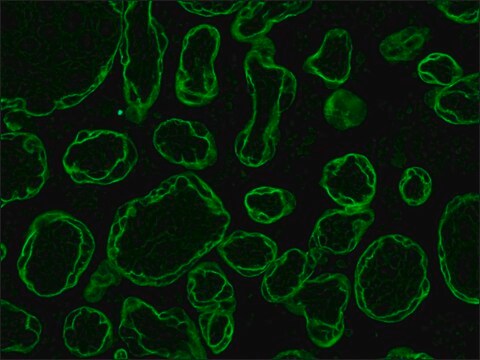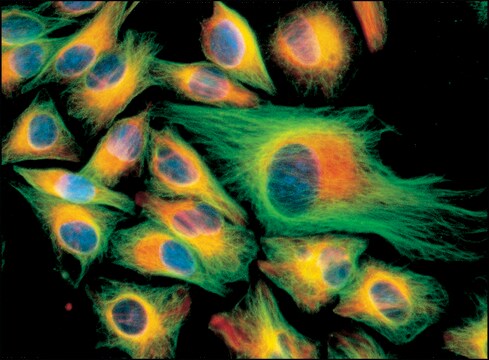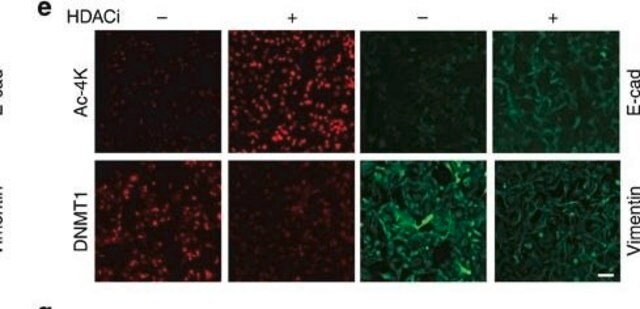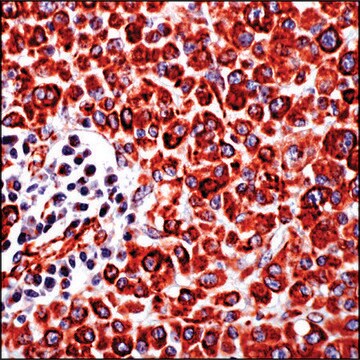C2562
Monoclonal Anti-Cytokeratin, pan (Mixture) antibody produced in mouse
clone C-11+PCK-26+CY-90+KS-1A3+M20+A53-B/A2, ascites fluid
Sinónimos:
Monoclonal Anti-Cytokeratin, pan (mixture), Panck Antibody, Panck Antibody - Monoclonal Anti-Cytokeratin, pan (Mixture) antibody produced in mouse
About This Item
Productos recomendados
biological source
mouse
conjugate
unconjugated
antibody form
ascites fluid
antibody product type
primary antibodies
clone
C-11+PCK-26+CY-90+KS-1A3+M20+A53-B/A2, monoclonal
contains
7% horse serum and 15 mM sodium azide as preservative
species reactivity
wide range
technique(s)
immunohistochemistry (formalin-fixed, paraffin-embedded sections): suitable using protease-digested sections of human or animal tissues
immunohistochemistry (frozen sections): suitable
indirect immunofluorescence: 1:100 using protease-digested, formalin-fixed, paraffin-embedded sections of human or animal tissues
western blot: suitable
isotype
IgG1/IgG2a
shipped in
dry ice
storage temp.
−20°C
target post-translational modification
unmodified
¿Está buscando productos similares? Visita Guía de comparación de productos
General description
Specificity
Immunogen
Application
- Immunohistochemistry (formalin-fixed, paraffin-embedded sections) using protease-digested sections of human or animal tissues.
- Immunohistochemistry (frozen sections).
- Indirect immunofluorescence (at a working dilution of 1:100 using protease-digested, formalin-fixed, paraffin-embedded sections of human or animal tissues).
- Immunocytochemical labeling (immunofluorescence ) of cells.
- Western blotting.
Biochem/physiol Actions
Disclaimer
¿No encuentra el producto adecuado?
Pruebe nuestro Herramienta de selección de productos.
Optional
Storage Class
10 - Combustible liquids
wgk_germany
WGK 3
Certificados de análisis (COA)
Busque Certificados de análisis (COA) introduciendo el número de lote del producto. Los números de lote se encuentran en la etiqueta del producto después de las palabras «Lot» o «Batch»
¿Ya tiene este producto?
Encuentre la documentación para los productos que ha comprado recientemente en la Biblioteca de documentos.
Los clientes también vieron
Nuestro equipo de científicos tiene experiencia en todas las áreas de investigación: Ciencias de la vida, Ciencia de los materiales, Síntesis química, Cromatografía, Analítica y muchas otras.
Póngase en contacto con el Servicio técnico








